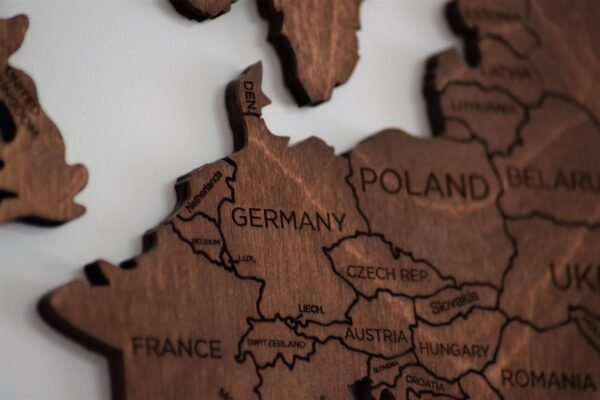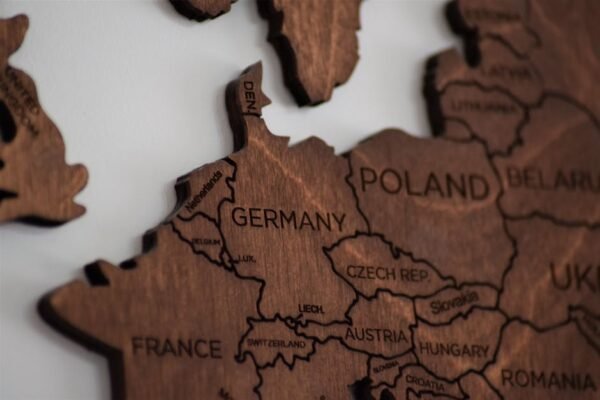Contents [hide]
Germany, officially the Federal Republic of Germany, is a federal parliamentary republic in central-western Europe. Germany includes 16 constituent states, covers an area of 357,386 square kilometres (137,988 sq mi), and has a largely temperate seasonal climate. With 82.2 million inhabitants, it is the most populous member state of the European Union.
Germany is a country in Central Europe that shares borders with nine other countries: Belgium, the Czech Republic, Denmark, France, Luxembourg, the Netherlands, Poland, Austria, and Switzerland. The country’s full name is the Federal Republic of Germany, and its capital city is Berlin.
Which country is Germany in?
Germany is a country located in Central Europe. It is the second-most populous country in Europe after Russia, and the most populous member state of the European Union. The country has a land area of 357,386 square kilometers, and a population of over 82 million people. The capital and largest city is Berlin. The official language is German.
The European Union (EU) is a political and economic union of 27 member states that are located primarily in Europe. The EU has a single market and a customs union, and it has established common policies on various areas, such as trade, agriculture, fisheries, and regional development. The EU countries are: Austria, Belgium, Bulgaria, Croatia, Republic of Cyprus, Czech Republic, Denmark, Estonia, Finland, France, Germany, Greece, Hungary, Ireland, Italy, Latvia, Lithuania, Luxembourg, Malta, Netherlands, Poland, Portugal, Romania, Slovakia, Slovenia, Spain, and Sweden.
What is the official name for the country of Germany
The Federal Republic of Germany, also known as West Germany, was founded on May 23, 1949, after World War II. It was a response to the increasing influence of the Soviet Union in Central Europe. West Germany became a member of NATO in 1955 and was one of the driving forces behind the European Economic Community, which later became the European Union.
Central Europe is a landlocked region in the heart of the continent. It is bordered by the Baltic Sea to the north, the Alps to the south, and has a varied terrain that includes low plains, high plains, hills, and basins. The region has a long history of human settlement and is home to many different cultures. Central Europe is a dynamic and vibrant region that is an important part of the European Union.
What countries are in Europe?
In today’s world, it’s more important than ever to be able to think critically and solve problems. Unfortunately, critical thinking and problem-solving skills are not always taught in school. If you want to improve your ability to think critically and solve problems, there are a few things you can do.
One way to improve your critical thinking and problem-solving skills is to read more. Reading helps you to see things from different perspectives and to understand different points of view. It also helps you to learn new information and to think about that information in different ways.
Another way to improve your critical thinking and problem-solving skills is to practice. You can practice by yourself or with others. If you practice by yourself, you can try to solve problems that you encounter in your everyday life. If you practice with others, you can work on puzzles or brainteasers together. You can also try to come up with solutions to real-world problems.
Finally, you can improve your critical thinking and problem-solving skills by taking courses or attending workshops. There are many courses and workshops available that can help you to learn more about these skills.
If you want to improve your critical thinking and problem-solving skills,
Germany is a federal republic composed of 16 states. The states are further subdivided into regions and cities. The list of states in Germany includes the following:
Berlin – the capital and largest city of Germany
Bayern (Bavaria) – the largest and most populous state of Germany, located in the south-east of the country
Niedersachsen (Lower Saxony) – a state located in north-western Germany
Baden-Württemberg – a state located in the southwestern part of the country
Rheinland-Pfalz (Rhineland-Palatinate) – a state located in the west of Germany
Sachsen (Saxony) – a state located in the eastern part of the country
Thüringen (Thuringia) – a state located in the central part of Germany
Hessen – a state located in the west-central part of the country
What language is spoken in Germany?
German is a West Germanic language that is mainly spoken in Central Europe. It is the most widely spoken and official language in Germany, Austria, Belgium, Luxembourg, and Switzerland. German is also an official language in Liechtenstein.
There are 44 countries in Europe today, according to the United Nations. The full list is shown in the table below, with current population and subregion (based on the United Nations official statistics).
Country | Population | Subregion
Albania | 2,866,000 | Southern Europe
Andorra | 77,000 | Southern Europe
Armenia | 2,963,000 | Western Asia
Austria | 8,858,000 | Western Europe
Azerbaijan | 9,867,000 | Western Asia
Belarus | 9,448,000 | Eastern Europe
Belgium | 11,427,000 | Western Europe
Bosnia and Herzegovina | 3,293,000 | Southern Europe
Bulgaria | 7,052,000 | Southern Europe
Croatia | 4,105,000 | Southern Europe
Cyprus | 1,188,000 | Southern Europe
Czech Republic | 10,596,000 | Eastern Europe
Denmark | 5,795,000 | Northern Europe
Estonia | 1,292,000 | Northern Europe
Finland | 5,
Is Germany a British country
Germany and the United Kingdom have a long and complex history. Following the defeat of Nazi Germany in World War II, the country was occupied by the Allied forces from 1945 to 1955. The country was then divided into West Germany and East Germany. Following the reunification of Germany in 1990, relations between the two countries have improved significantly.
In Germany we use “Amerika” as a synonym for the country USA. We also use it to refer to the continent, but usually add “Nord-” or “Süd-“. Thus, the inhabitants of the country are called “Amerikaner”.
Where do Germans come from?
The Germanic peoples are a ethno-linguistic group of Northern European origin, identified by their use of the Germanic languages and related dialects. Their history is associated with the migration of Germanic tribes from the Swedish peninsula and Denmark in the late Bronze Age. These tribes settled in northern Germany between the Ems River and the Oder River, as well as in the south around the Harz Mountains. Over time, the Germanic peoples assimilated with the native Celtic and Roman populations in these regions, giving rise to the modern Germanic nations.
Overall, I really like living in Germany. The standard of living is high and there are plenty of options for work-life balance. The cost of living can be high in some areas, but there are also many benefits to living here. I would recommend it to anyone looking for a good place to live.
Why is Germany known for
Germany is a top destination for travelers because of its interesting history and rich culture. The old-fashioned architecture and colorful landscape make for an excellent travel experience. The food and beer are delicious, and the people are friendly and welcoming. You won’t be disappointed if you choose to visit Germany!
Germany is a renowned country for many reasons. It has a strong economy, being the birthplace of classical music and philosophy. Additionally, Germany is known for its engineering and automotive industry, as well as its precision manufacturing. The country is also blessed with scenic beauty, making it a popular tourist destination. All of these factors contribute to Germany’s well-deserved reputation as a great place to live and work.
What is Germany called before?
Germany has been known by many names throughout its history. Germania was the name given to the region by the Romans. The Holy Roman Empire was a medieval empire that was initially created as the Kingdom of Germany. The Franks were a group of Germanic tribes who inhabited present-day France and Belgium. Germany was also previously known as Prussia.
Russia is a transcontinental country, extending from Eastern Europe to Northern Asia. With an area of 17,098,242 square kilometers, it is the largest country in the world, covering more than one-eighth of the Earth’s inhabited land area.
The Russian Federation is a federal state composed of 85 federal subjects, 46 of which are oblasts (provinces), 21 are republics, nine are krais (territories), and four are autonomous okrugs (districts).
Warp Up
Germany is a country located in Central Europe.
Although Germany is often thought of as a single country, it is actually a federal republic made up of 16 individual states. These states are then further divided into more than 3,000 regions. Germany is located in Central Europe and shares borders with nine other countries. well-known for its diverse landscape and interesting culture, Germany is a popular tourist destination.


0 Comments